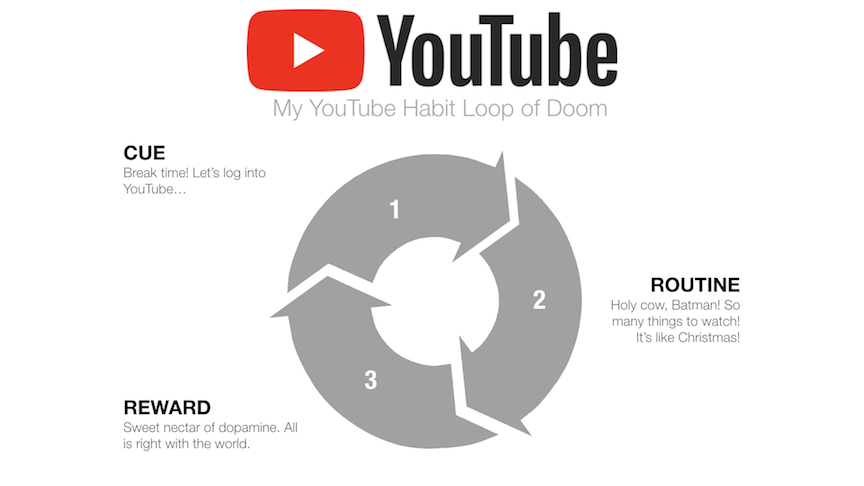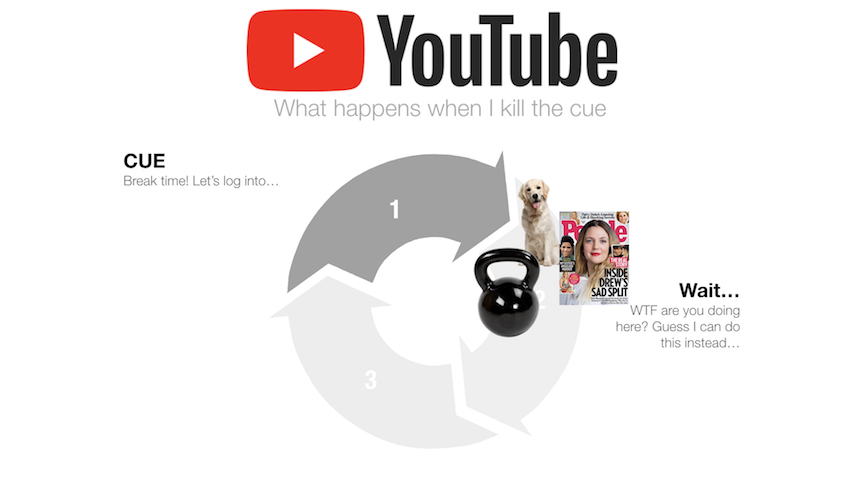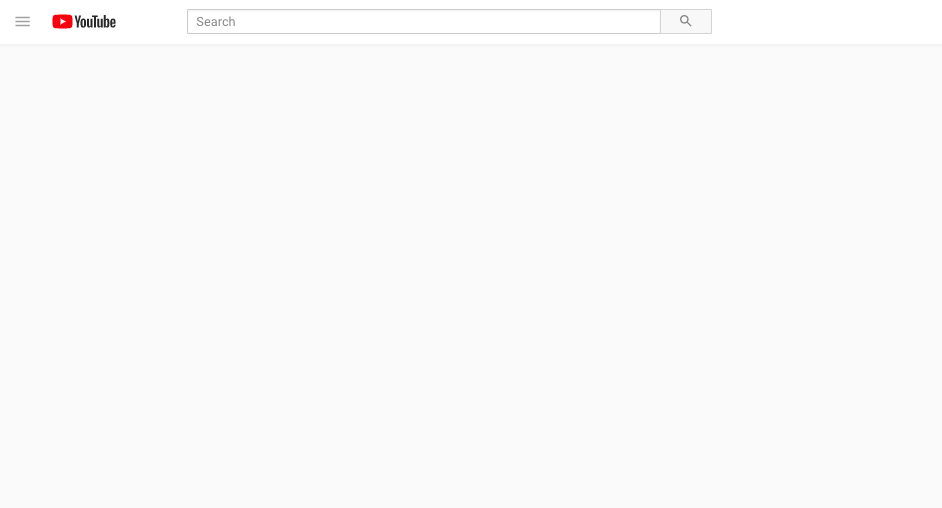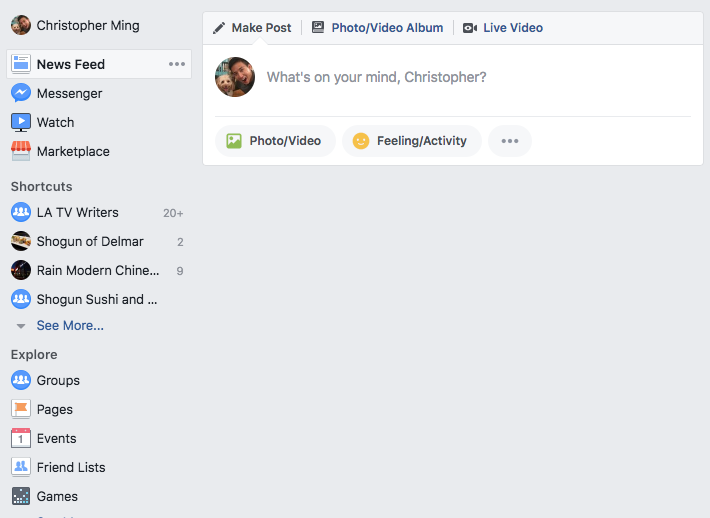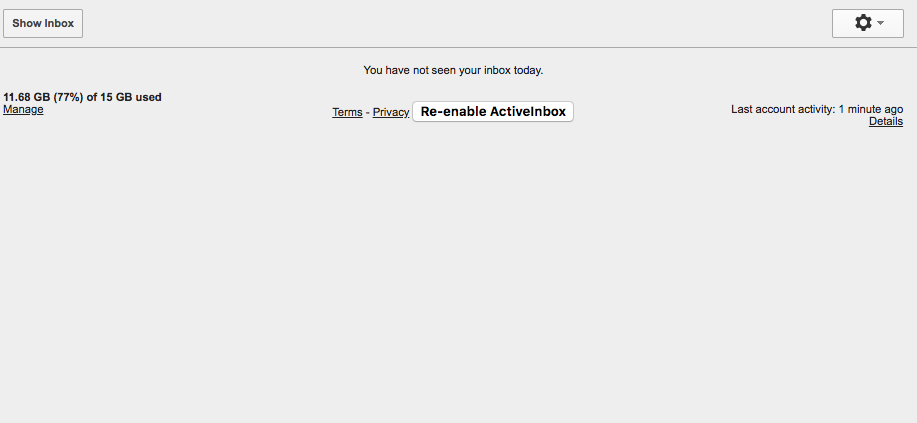This article is about social media addiction.
We will get there…
But to find our way, we have to first talk about Joanna Jędrzejczyk (pronounced Yon-Jay-Check).
Joanna Jędrzejczyk is one of the most decorated women MMA fighters in the history of the sport. Before she dominated the women’s strawweight division, she won over 60 Thai boxing matches. She’s landed the most significant strikes in UFC championship history (225), plus the highest significant strike differential in UFC championship history (142).
In the UFC, striking analyst Jack Slack compared her to Chuck Liddell, but “she undoubtedly has a better technical striking game than Liddell.”
On November 4, 2017, Ms. Jędrzejczyk went into Madison Square Garden for UFC 217 to make history. If she won against the challenger, Rose Namajunas, she’d tie Ronda Rousey’s record for six title defense.
Ms. Namajunas, the massive underdog, stopped history in its tracks. She KO’ed the undefeated Jędrzejczyk, and became the new UFC women’s strawweight champion.
Ms. Namajunas later revealed two prongs to her strategy:
One: be willing to strike with Joanna.
Everyone tries to take her down. Rose didn’t. She stood and traded, and showed she was just as good in the stand-up game.
Two: social media. Or, the lack thereof.
“The strategy was to ghost Joanna”
Pat Barry, Ms. Namajunas’ fiance and training partner said:
“We knew Johanna was checking her Instagram everyday. It would drive her crazy [if Rose didn’t] post anything or be seen anywhere. She had no idea what [Rose] looked like. She didn’t see [Rose] training.
The strategy going into this fight was to ghost Joanna. That was a big part of this game plan was to ghost her no matter what she says, no matter what she does.
We knew that it was going to come in levels. She was going to say this, then she’s going to say this, then she’s going to say this and then she’s going to talk about your dog.
It’s going to get bigger and bigger an bigger and bigger. We even knew she’s going to touch you. She’s going to push you, she going to touch you and when she does don’t move.
Don’t react, give her nothing.
Give her nothing and it worked.”
Could this strategy really have been powerful enough to affect Ms. Jędrzejczyk’s performance the night of the fight? If you’ve seen her unrelenting mind games against her competitors before fights — in real life and on social media — I think you’d agree the answer is “yes.”
If you disagree, try this: Put down your phone. Close your computer. And try sitting for five minutes, doing absolutely nothing.
…
It’s unsettling how uncomfortable that feeling is, isn’t it? Not having anything to react to? Almost as if there’s this need to fill the void with something, anything. It’s like a gut-wrenching fear of boredom, that we need to avoid at all costs. As if we need to eschew monotony because our souls depend on it.
This discomfort is one of the most powerful, persistent feelings we feel on a day-to-day basis, and like the addicts we are, we turn to Facebook, Twitter, YouTube, etc. to get that dopamine hit and make it go away.
When did this happen? When did the frenetic need to distract take over our lives, and leave us unwilling or unable to be alone with our own thoughts? I can’t walk my dog without putting on a podcast. I queue up articles in Pocket to occupy myself on the train. And I sneak glances at different feeds when I’m on line at the grocery store. Sitting in the dentist’s chair. Pooping on the toilet.
And if you’re a mixed martial arts fighter like Ms. Jędrzejczyka, and a massive part of your game plan is reacting and eliciting reactions from your opponent in the build up to the contest, to suddenly be stripped of that weapon, to have the drug taken away from you before you step in the ring — yes, at the highest levels, I do think it makes a difference in your performance.
Drugs of choice
There is a plethora of options to get your dopamine fix, but we all have drugs of choice.
In 2017, mine were Instagram and YouTube. On the ‘gram, I found myself sucked down a hashtag orgy like Alice through the looking glass. Next thing I know it’s 2am and I’ve watched every #amateurfight #realfight #fights #streetfight 60-second clip on the Internet.
YouTube was worse. You didn’t even need to search by hashtag. Thanks to artificial intelligence that crawls through my dreams while I’m sleeping, the YouTube algorithm knows what I want to watch before I make it out of bed. As Casey Newton put it in The Verge:
“YouTube has always been useful; since its founding in 2005, it has been a pillar of the internet. But over the past year or so, for me anyway, YouTube had started to seem weirdly good. The site had begun to predict with eerie accuracy what clips I might be interested in — much better than it ever had before. So what changed?”
Suddenly, I’m confronted by recent scenes from Game Of Thrones and Taylor Swift music videos. With every click, I’m drawn like Butes towards YouTube’s siren call into rocky waters. At the end of the week, I’d wonder, how come I don’t have time to read anymore? Why haven’t I watched a movie in months?
The irony is we literally teach how this all works in our User Psychology lectures in Reforge, and how products like YouTube and Instagram get us to build habits around their products.
Here’s what’s happening in my YouTube Habit Loop of Doom:
Let’s take a closer look at what’s going on here.
How We Build — and Break — Habits
Charles Duhigg, the author of The Power Of Habit says here’s a “simple neurological loop at the core of every habit that consists of three parts: a cue, a routine and a reward.”
Simply put, understanding your own habits is a matter of identifying the parts of this loop. Once you understand the loop for a certain habit, you can start to change your behavior.
Duhigg uses his example of buying cookies to describe this neurological loop:
“Let’s say this habit has caused you to gain exactly 8 pounds, and that your wife has made a few pointed comments. You’ve tried to force yourself to stop – you even went so far as to put a post-it on your computer that reads ‘NO MORE COOKIES’.
But every afternoon you manage to ignore that note, get up, wander towards the cafeteria, buy a cookie and, while chatting with colleagues around the cash register, eat it. It feels good, and then it feels bad. Tomorrow, you promise yourself, you’ll muster the willpower to resist. Tomorrow will be different. But tomorrow, the habit takes hold again.”
Before Mr. Duhigg broke down these concepts in his book, Claude Hopkins, author of My Life in Advertising and Scientific Advertising, used it to create demand around toothpaste.
It’s worth noting that today’s products and social apps haven’t done anything radically different to change the fundamentals of the Habit Loop. They haven’t changed the theory. Instead, they use technology to exploit human behavior faster and better than ever. They simply took this idea — reversing engineering what creates a habit, using it to trigger desired reactions — and ran with it.
There were times when I’d catch myself entering the loop, identifying the trigger or the cue, watching myself execute the routine, and enjoying that hit of dopamine… totally aware of what was happening, yet unable to do anything about it.
Interrupting the habit loop
The fashionable thing to do at the moment is to put Facebook, Twitter, and Google on blast for hijacking our minds. Parade the legal counsel in front of the House and Senate Intelligence committees to be publicly scolded, these same committees who have tens of thousands of Twitter followers, but can’t deploy a Facebook ad and don’t quite understand the magnitude of the impact these companies have ( California Senator Diane Feinstein, for example, was surprised to learn Twitter had 330 million MAUs).
We can jump on the Tristan Harris and Roger McNamee bandwagon, evangelists calling for government regulation while simultaneously building their own platforms off their jihad. (For example, Harris reminds site visitors he’s been called the “closest thing Silicon Valley has to a conscience, while McNamee touts his early influence on Facebook in The Washington Post clickbait op-eds.)
(FWIW, executives are skeptical of McNamee’s contributions to Facebook.)
Or, we can take control of our decisions and habits, own the fact that we put ourselves in this situation, and so it’s on us to take back control. The question is: how?
How can we stop our social media addiction?
By understanding the habit loop, we can disrupt it.
The trick, or “one simple hack that’ll save you thousands of dollars” (it won’t) is to interrupt the loop. Stop the loop, at any point, from getting to the next step. It doesn’t matter if it’s the cue, the routine, or the reward. Stop the loop in its tracks, by any means necessary.
Let’s look at my YouTube Habit Loop of Doom again:
One strategy would be to go after the cue, and strike at the heart of the Habit Loop: “boredom.” I notice there are certain times I get bored, like 3:30pm and 5:30pm. Why do I get bored? Because it’s right after I finish calls, and I’m trying to transition back to work — it’s the perfect time for a little YouTube break.
So, to kill that cue, I’ll schedule that time with something very specific to replace it, like:
- Read a magazine for 10 minutes
- Play with my dog
- Do kettlebell swings
This is what happens to the Habit Loop today:
It doesn’t matter what the replacement is, as long as it stops the Habit Loop in its tracks. And the less and less this Habit Loop plays out, the less automatic it becomes. Habits grow stronger the more you do it, but the inverse is true too: the less you repeat the action, the more the habit atrophies, until you no longer feel the pull at all.
Let’s look at another strategy to stop this YouTube habit, but this time, we’ll target the second step in the loop, the routine.
I’ve downloaded this chrome extension called Distraction Free (DF) YouTube. It kills the YouTube homepage, the sidebar, and recommended videos — basically every piece of real estate where YouTube can recommend the perfect video to complement the video you just watched. So, if the cue (boredom) triggers the routine, instead of that amazing YouTube feed above, I land on this:
After running this Habit Loop and landing on a blank feed, I realized: I never go to YouTube to watch something specific (pull). Instead, I go to YouTube, so YouTube can tell me what to watch (push). The second I stop YouTube from pushing content, I don’t use it.
I’ve literally been triggered by boredom, went to YouTube, landed on the blank homepage, and then realized I didn’t have anything specific I wanted to watch, so, I exited out two seconds later.
That’s really all it takes to stop social media addiction — a properly timed interruption to the Habit Loop. However, the game for your attention is an arms race. As you get better at controlling your habits, companies, in turn, escalate their abilities to hijack your attention. What we need is a more robust set of strategies and tools to keep our attention for ourselves.
Strategies and tools to control the Habit Loop
There are a ton of tips and tricks out there, from switching on airplane mode when it’s time to work, turning your phone to grayscale, and “scrambling apps” (moving your apps every two weeks, so it takes you an extra second to find your favorite social media app).
Here are my favorite strategies, that come from two people: Neil Strauss and Paul Jarvis.
Neil Strauss is a 7-time New York Times Bestselling author, and a frequent contributor to Rolling Stone and The New York Times. When it’s time to reign in any external Habit Loops that will pull him from his work, he takes extreme measures to save himself from himself. He turns his phone over to his friend, instructs them to change the passcode, and instructs them not to reveal it to him. Then, he thinks through the rest of his day, and eliminates other pesky distractions — like food. He rigorously plans his meals, so he never has to pause and think: “What am I going to eat?”[note]The Tim Ferriss Podcast, Ep 15: Neil Strauss, Author of The Game | https://tim.blog/2014/06/24/neil-strauss/[/note]
Paul Jarvis writes on his site and teaches business owners how to run better — not bigger — businesses. Over the years, he’s escalated his strategies: first, by turning off all notifications. Then, he started taking digital sabbaticals for longer and longer periods of time. At this stage, he’s deleted all social networking apps off his phone completely (so if he has to hop on Twitter, it has to be at his computer). What I liked about Jarvis’s method was the slow, incremental approach. He gradually weaned himself off the Habit Loop, even though he runs his entire business online.
This is important, especially for those of us who work remotely or on online business: Just because your business is online, it’s not an excuse to be at the whim of the technology that enables you to work. The technology is a tool, and it’s on you to deploy it intelligently and in a way that adds value to your life, not takes it away.
Lastly, some of my own tooling recommendations, that have helped me interrupt different parts of the Habit Loop and stop my social media addiction (zero $$$ for these recommendations, 100% for the love):
Freedom lets you set the parameters to keep you off the Internet. Pick the sites and apps you know kill your productivity (Instagram, Twitter, Reddit, Facebook, Redtube), schedule the times you want the app to kick in, and enjoy freedom from distraction.
Pro-tip: no need to crank the dial to “kill” when “stun” will work. It’s okay to occasionally indulge in a Twitter or Instagram binge, so don’t try to turn off all apps, all the time. Instead, use it like a scalpel, to surgically pinpoint times or situations when you trigger the cue that jump starts the Habit Loop. Freedom blocks the cue, and you’re in control.
Freedom is $30/year.
“Kill News Feed” works as describes — it’s a Chrome extension that kills the Facebook News Feed when you log in, so you’re no longer inundated with posts about one-click systems that’ll have you earning thousands a month from home, or the viral video of the panda you have to see to believe.
Instead, you’re presented with a beautifully blank, distraction-free Facebook News Feed that looks like this:
This is a must-have if you find hours of your life disappearing into The Book.
Kill News Feed is a free product.
I mentioned this above. YouTube may know everything my heart desires, from the best moments in Bleach to my favorite scene from Rounders (“I bet it all”), but if there’s zero real estate to push those videos, the algorithm is useless. An absolute must-have if YouTube is your social media poison (like it is mine).
Distraction Free YouTube is a free product.
This was recommended by Sam Parr of The Hustle (I strongly recommend their daily newsletter — signup with this link and I get gold stars or a unicorn or something). I’ve been using it for a few days and already love it.
When you sign, instead of being confronted by a deluge of emails that only expands your to-do list, here’s what you see:
You can still send email, but in order to see your inbox, you need to click the “Show Inbox” button sitting discreetly in the top left corner. I especially love the “You have not seen your inbox today” text, which tells you how many times you’ve checked your inbox during the day.
Inbox When Ready is a freemium product.
Fighting social media addiction is a war
To be clear: I love social media. Every goddamn app I love in a different way. Each product (Twitter, Facebook, Instagram, Snapchat, Swarm, Anchor, etc.) is an incredible complement to my IRL relationships.
Social media addiction isn’t a war against the companies that created the tools, it’s a war against ourselves.
To win, we don’t need government regulation. We need to understand how we as people create — and destroy — our own Habit Loops, and strategies and tools to help us do that.
###
Photo Credit: Glenn Comvalius


